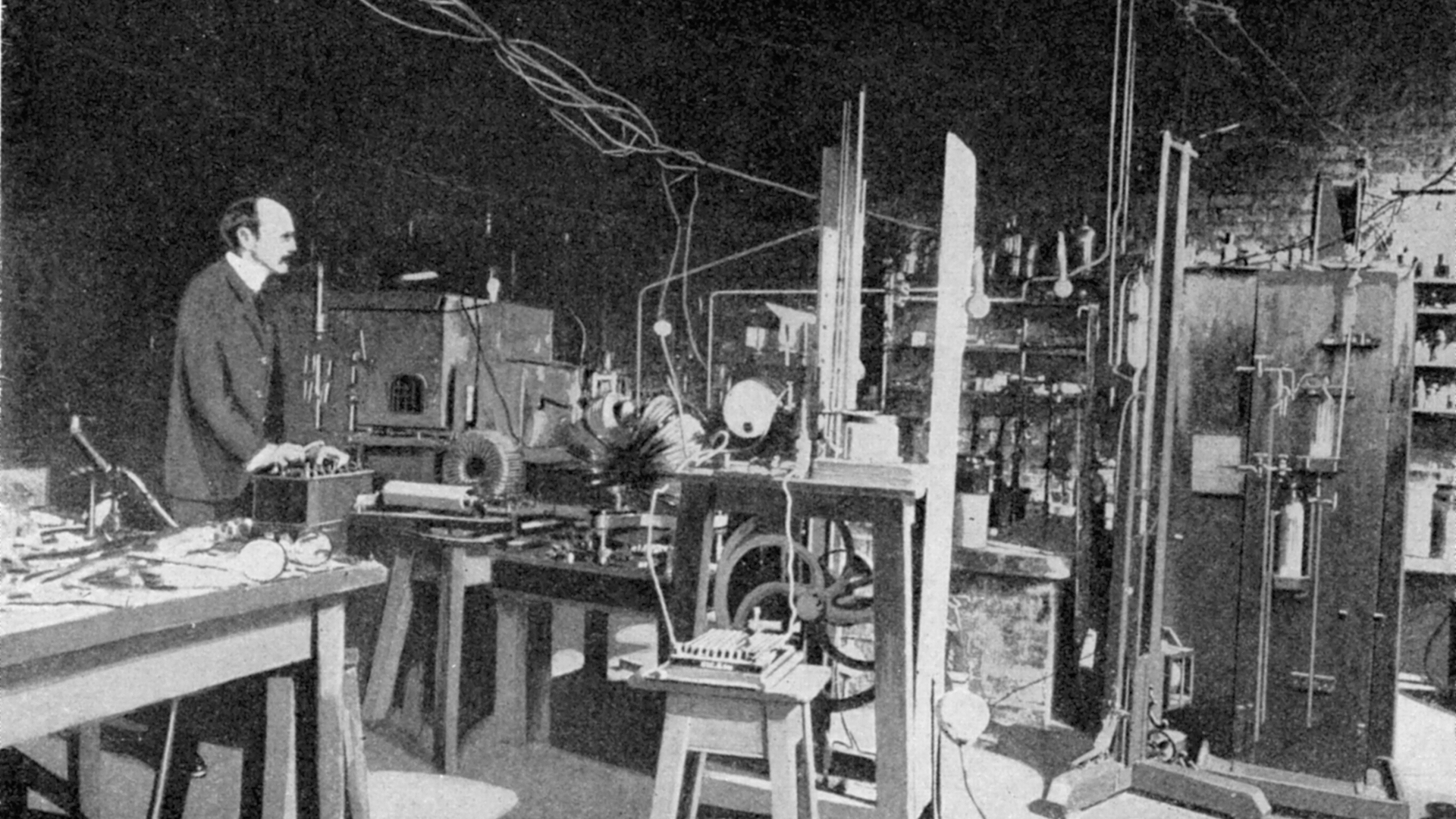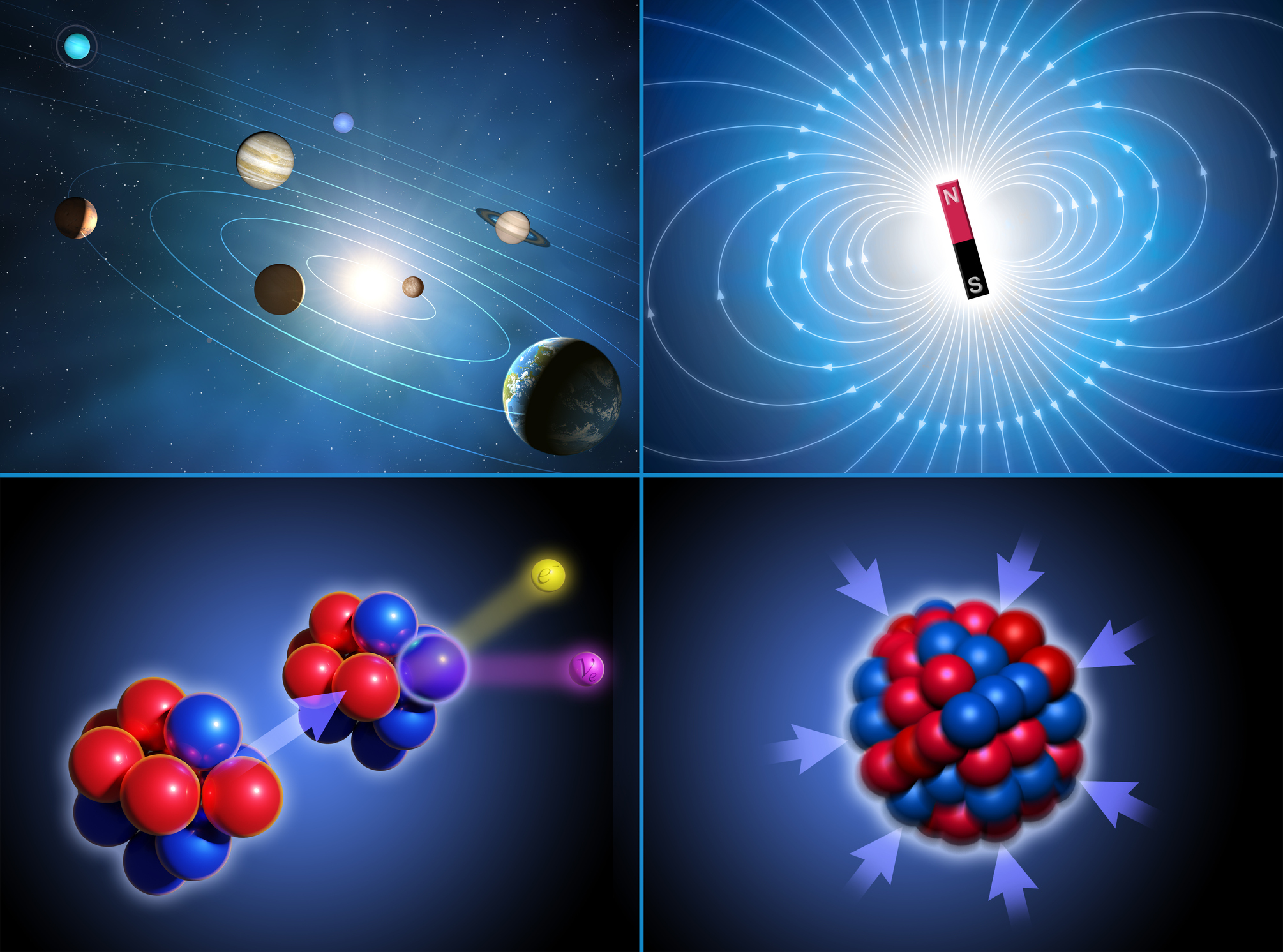Leptons: The elementary particles explained
Some of these tiny elementary particles are among the most important particles in the universe.

Leptons are elementary particles, which means that they are not made from any smaller particles.
There are six known types of lepton (12 if you count their anti-particles). Three of these are negatively charged particles: electrons, muons and tau particles. The other three are neutrinos, which are electrically neutral. There is a corresponding neutrino for each type of charged lepton, so we have the electron neutrino, the muon neutrino and the tau neutrino.
Leptons are a crucial part of the Standard Model of particle physics. Electrons are important components of atoms, while neutrinos flood the universe and are produced by nuclear fusion reactions in stars as well as by particle decay.
Related: 10 mind-boggling things you should know about quantum physics
What is the Lepton Number?
An example of leptons involved in particle decay is the decay of a neutron. Neutrons are stable when bonded to other neutrons and protons in atomic nuclei, but when they are on their own outside of atomic nuclei they are unstable and decay after about 15 minutes into a proton, an electron and an anti-electron neutrino.
This decay reaction demonstrates a couple of the fundamental properties of leptons. First of all, it conserves a property known as the Lepton Number, which is defined by physicists at Georgia State University as the number of leptons minus the number of anti-leptons. A neutron is a baryon, not a lepton, so its Lepton Number is 0. Therefore its decay products must also add up to a Lepton Number of 0. The Lepton Number of an electron is 1, and the Lepton Number of an anti-neutrino is –1, hence they cancel and conserve the overall Lepton Number of the reaction.
Complicating things are the three families of leptons (electron and electron neutrinos, muons and muon neutrinos, and tau particles and tau neutrinos) and the rules of Lepton Numbers say they can't be mixed and matched. So, a neutron could never decay and produce an electron and an anti-muon neutrino, because they belong to different families of leptons.
Breaking space news, the latest updates on rocket launches, skywatching events and more!
However, once an anti-electron neutrino is produced from the decay of a neutron, the neutrino itself can change flavor into a muon or tau neutrino. This is referred to as neutrino oscillation and is described by physicists in Stanford University's Neutrino Group. Neutrino oscillations are the solution to the mystery of the solar neutrino problem, where it seemed that only a third of the expected number of electron neutrinos from the sun were reaching Earth. It turned out that they weren't vanishing, but oscillating into muon and tau neutrinos on their way here.
Properties of leptons
The electron was the first lepton to be discovered, in 1897 by the British physicist Joseph John Thomson. An electron has a rest mass energy of 0.511 MeV (Mega electron-Volt) (which equates to 9.1 x 10^–31 kilograms). Electrons are important components of atoms, orbiting the nucleus of an atom composed of protons and neutrons. An atom will have the same number of electrons as it does protons, ensuring that the
positive charges on the protons and the negative charges on the electrons cancel out to create an electrically neutral atom. Many chemical processes are related to the presence of these electrons in atoms.
Muons were discovered in 1936 by Carl Anderson and Seth Neddermeyer, who were performing experiments with cosmic rays from deep space (Anderson had already discovered the electron's anti-particle, the positron, four years earlier). A cosmic ray is something of a misnomer — it's not a 'ray' but a particle of immensely high energy produced by violent processes in the universe such as quasars, supernovae and highly-magnetized supernova remnants. When cosmic rays enter Earth's atmosphere, they collide with atmospheric molecules and smash apart, producing a shower of daughter particles created in the collision. Muons are among these daughter particles, but they are short-lived, decaying back into an electron after just 2.2 millionths of a second. Fortunately, because they are traveling at almost the speed of light, they can reach the surface of the Earth before they decay, allowing scientists to detect them.
Muons are more massive than electrons; 207 times more massive to be precise, with a rest mass-energy of 105.7 MeV (equivalent to 1.9 x 10^–28 kg).
Tau particles were discovered by Martin Perl particle-accelerator experiments in 1975 and, like muons, are also only created in violent particle collisions. Tau particles are even more massive than muons, with a rest mass energy of 1,777 MeV (equating to 3.1x 10^–27 kg) meaning they are about 3,700 times more massive than an electron. Like muons, tau particles are incredibly short-lived, decaying after just 29 trillionths of a second. Literally, blink and you'll miss them, which is why they took much longer to be detected.
The name 'lepton' was coined in 1948 by physicist Léon Rosenfeld and the final lepton to be discovered, the tau neutrino was found as recently as the year 2000. No further leptons are predicted to exist in the Standard Model, although there has been some suggestion that there could be a hypothetical fourth type of neutrino called a sterile neutrino. The sterile neutrino is one possible explanation for the identity of dark matter. If sterile neutrinos really do exist, then they would be an indication of physics beyond the Standard Model.
The important difference between leptons and quarks
Leptons are fermions, which means that they have a spin of 1/2 (fermions have half-integer quantum spins, i.e. 1/2, or 3/2). Quarks — which are the building blocks of protons and neutrons that form the basis of atomic nuclei — are also fermions and elementary particles. So, is there any difference between leptons and quarks?
Yes, there is. Crucially, quarks are the only particles to experience all four fundamental forces: the strong nuclear force, the weak interaction, the electromagnetic force and gravity. On the other hand, leptons only experience three of them: the weak interaction, the electromagnetic force and gravity.
The strong force is the glue that binds quarks together to form atomic nuclei. Because of this, no quark can exist in isolation. Because leptons don't feel the strong force, they are free to exist alone, outside of atoms, floating through space. Although muons and tau particles don't exist long enough before decaying via the weak interaction to make the most of their freedom, free electrons and neutrinos are key components of the particle universe.
Free electrons, for example, scatter photons. When the universe was very young and hot, space was swamped by free electrons that scattered light, meaning that photons couldn't travel any appreciable distance and the universe remained pretty dark. About 379,000 years after the Big Bang, the universe had cooled enough that atomic nuclei were able to join with electrons to form complete atoms of hydrogen and helium. With most of the free electrons being swept up that path was cleared to allow photons to finally travel through space unhindered. These first photons are what we see today as the cosmic microwave background (CMB) radiation that tells us so much about the very early universe and the Big Bang.
Of course, there are still many free electrons today; the energy of a photon impacting an atom can be enough to liberate an electron and 'ionize' the atom. Inside Earth's sun, where temperatures can reach 27 million degrees Fahrenheit (15 million degrees Celsius) in the core, such collisions happen all the time. Photons of energy generated in the sun's core by nuclear fusion reactions continually scatter off free electrons inside the sun's inner 'radiative zone' meaning that depending upon what assumptions you use in your calculations, they can take anywhere between 4,000 years and a million years to reach the surface of the sun and be emitted as light. As a result, the sunlight that we see is very old indeed!
Additional resources
Explore the Standard Model of particle physics in more detail with these resources from the Department of Energy. Learn more about leptons with chemeurope.com, a specialist portal for the chemical sector. Take a deeper dive into particle physics with this free online learning course by The Open University.
Bibliography
Particle Physics, by Brian R. Martin (2011, One-World Publications)

Keith Cooper is a freelance science journalist and editor in the United Kingdom, and has a degree in physics and astrophysics from the University of Manchester. He's the author of "The Contact Paradox: Challenging Our Assumptions in the Search for Extraterrestrial Intelligence" (Bloomsbury Sigma, 2020) and has written articles on astronomy, space, physics and astrobiology for a multitude of magazines and websites.


